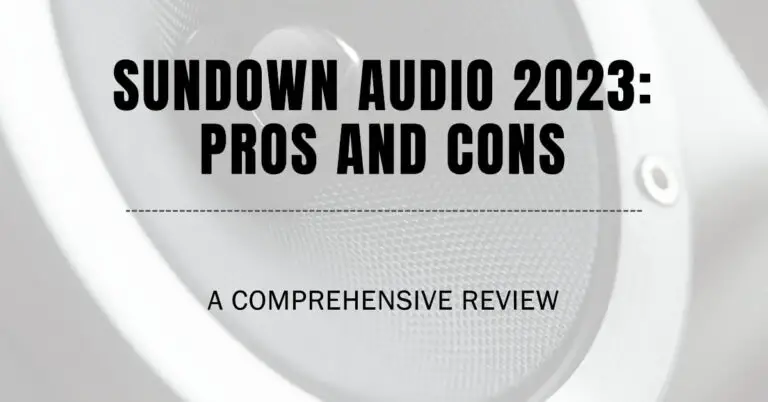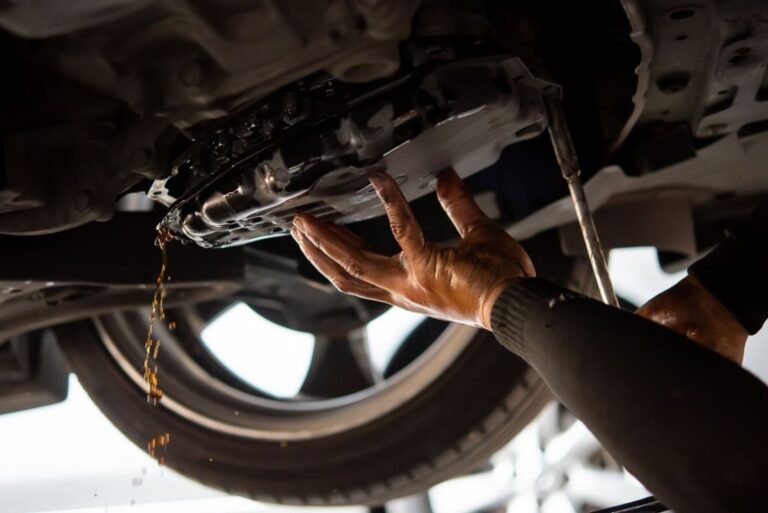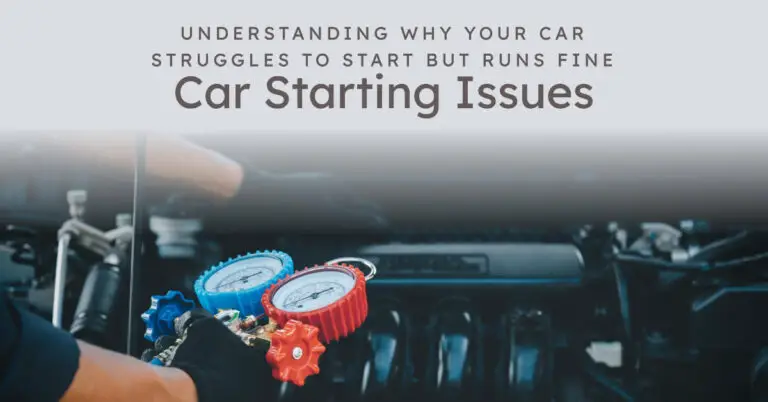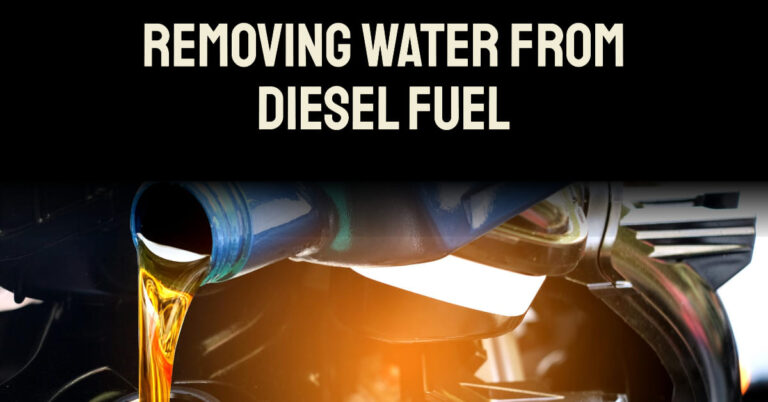What Causes A Crankshaft Seal To Leak? How To Fix It

A leaking crankshaft seal can quickly become an expensive repair if left unchecked. But what actually causes a crankshaft seal to fail in the first place? A crankshaft seal leak is most often caused by normal wear and tear, improper installation, or heat damage that warps the sealing surfaces. By understanding the root causes of crankshaft seal failure, you can better prevent leaks and diagnose problems early.
This in-depth guide will explore all of the potential reasons a crankshaft seal can leak. You’ll learn how crankshaft seals work, inspect for damage, and perform repairs. With the right knowledge, you can keep your crankshaft seals leak-free for the long haul.
Table of Contents
An Introduction to Crankshaft Seals
Before diving into what causes crankshaft seal leaks, it helps to understand what these seals do in the first place.
The crankshaft seal is located at the front and rear of the crankshaft, where it passes through the engine block. Its job is to seal the tiny gap between the spinning crankshaft and the stationary engine block, preventing oil from leaking out.
This seal maintains proper oil pressure and keeps contaminants like dirt and debris from getting into the crankcase. The crankshaft seal is constantly exposed to high heat and friction, making it prone to wear and leaks over time.
Crankshaft seals are made from oil and heat resistant rubber or silicone materials. Most have a metal case for structural rigidity. The lip of the seal contacts the smooth crankshaft surface, while the outer diameter is pressed into the engine block.
Now that you know what a crankshaft seal does, let’s explore why these seals eventually fail.
Normal Wear and Tear
One of the most common reasons for a crankshaft seal leak is normal deterioration over time and accumulated miles. As your engine accrues mileage, the seal wears from friction and heat cycles. Tiny imperfections in the crankshaft surface grind against the lip of the seal.
Over time, these factors cause the seal’s lip to flatten and lose its perfect contact with the crankshaft. Surface irregularities open up pathways for oil to leak through. This gradual wearing down of material is inevitable as the miles add up.
Most crankshaft seals will begin seeping oil after 60,000 to 100,000 miles. High performance engines and vehicles driven under severe conditions may experience seal leaks sooner. Routinely inspecting your seals and catching leaks early is key.
Improper Installation
Many crankshaft seal leaks aren’t caused by age, but by improper installation. Even tiny mistakes during seal replacement can allow leaks.
One issue is the crankshaft seal not getting fully seated in the bore during installation. A gap between the outer seal edge and block surface will provide an opening for oil leaks. Using the proper seal driver tool can prevent this.
Reusing old seals is another problem. The seal surface won’t perfectly mate with a worn crankshaft. Rubber seals also take a permanent “set” and won’t seal correctly if re-installed. Always use new seals when servicing your engine.
Being too aggressive when installing the crankshaft seal risks damaging the lips, spring, or casing. Take care not to bend or twist the seal during insertion. Make sure the seal is evenly pressed in square to the block.
Doing your research and taking the time to properly replace crankshaft seals will pay off in leak prevention down the road.
Overheating Damage
Excessive engine heat is another culprit for crankshaft seal leaks. The high temperatures found in the crankcase environment are already demanding on seals. But overheating episodes can quickly damage seals.
Heat causes the crankshaft seal’s rubber to harden and deform. The once flexible lip loses its ability to conform to subtle surface irregularities. Even minor warping in the metal seal case or crankshaft journal alters the sealing surfaces.
Overheating events also produce higher crankcase pressures. Blow-by gasses can overwhelm the seal lip, pushing past and causing leaks. These extreme temperatures are often seen in performance engines or vehicles driven hard without proper engine cooling.
Watching your vehicle for overheating and addressing problems like bad water pumps, stuck thermostats, and clogged radiators protects your crankshaft seals.
How to Diagnose a Crankshaft Seal Leak?
Catching crankshaft seal leaks early is the key to minimizing engine damage. Here are some tips for diagnosing crankshaft seal failure:
Inspect for Oil Leaks
- Look under the engine for fresh oil drips or splatter marks coming from the crankshaft seals. Leaks may coat the undersides of the engine and chassis.
- Check the driveway or garage floor for new oil spots that can pinpoint the leak location. Watch for drops on the ground when parked.
Check for Oil Residue
- Oil slung from a failing crankshaft seal leaves glossy residue on surrounding components. Look for wetness around the crank pulley and harmonic balancer.
- Seal leaks near the flywheel may coat the clutch and transmission. Watch for oil on the starter motor and backing plate.
Perform an Oil Pressure Test
- Use an oil pressure gauge to diagnose loss of pressure from crankcase leaks. Compare idle and revved pressures to factory specs.
- Low oil pressure can indicate worn bearings or seals. Pressure drops when the engine is revved points to seal damage.
Catching leaks quickly limits the amount of oil burned or dripping onto hot exhaust components. Now let’s explore how to correctly fix a failing crankshaft seal.
How to Fix a Leaking Crankshaft Seal?
Replacing a leaking crankshaft seal involves carefully removing the old seal and installing a new one using precision techniques. Here is a step-by-step overview:
Remove the Old Crankshaft Seal
- Gain access by removing components like the radiator, pulleys, and front engine covers.
- Carefully pry out the old seal using a seal remover tool. Be cautious not to score the crankshaft journal sealing surface.
- Thoroughly clean all old sealant and residue from the crankshaft journal and seal bore.
Install New Crankshaft Seal Correctly
- Lightly lubricate the new crankshaft seal lip with oil to prevent tearing. Only apply oil to the sealing lip, not the outer housing.
- Use a seal installer tool, sleeve, or socket to evenly press the new seal into the bore until fully seated.
- Follow the vehicle manufacturer’s torque specifications for re-installing any pulleys or fasteners removed.
- Properly fill the engine oil and check for any remaining leaks before starting the engine.
With some care and patience, you can successfully replace your leaking crankshaft seal and stop ongoing oil leaks.
Preventing Future Crankshaft Seal Leaks
Once you’ve fixed a leaking crankshaft seal, you’ll want to take proactive steps to prevent repeat failures down the road:
- Use high-quality seals – Stick with seals from reputable brands that meet all manufacturer specifications for your engine. Avoid cheap counterfeit seals.
- Inspect at oil changes – Make it a habit to look for signs of seal seepage during routine oil changes. Address small leaks immediately before they worsen.
- Let the engine warm up – Avoid high RPMs and load before the engine reaches operating temperature. Limit short trips to reduce moisture and condensation.
- Watch your temperature gauges – Make sure your cooling system is in good working order. Don’t ignore signs of overheating.
- Follow maintenance schedules – Stick to recommended intervals for changing oil, coolant, and other fluids to protect seals.
- Use the right oil – Run quality oil of the proper viscosity to maintain optimal sealing and reduce blow-by.
Making crankshaft seal maintenance part of your regular engine care routine is the ounce of prevention that’s worth a pound of cure.
Conclusion
Crankshaft seals are a simple part that play an important role in keeping your engine healthy. Understanding why seals fail helps you be proactive with inspections and repairs.
The most common causes of crankshaft seal leaks include normal seal wear over time and mileage, improper installation, and heat damage from overheating. Catching even small leaks quickly can prevent a minor drip from becoming a major oil leak.
With vigilance and proper care taken during seal replacement, your fresh crankshaft seals should provide thousands of miles of leak-free protection. Your efforts will be rewarded with an engine that runs smoothly while retaining maximum power and fuel efficiency.







